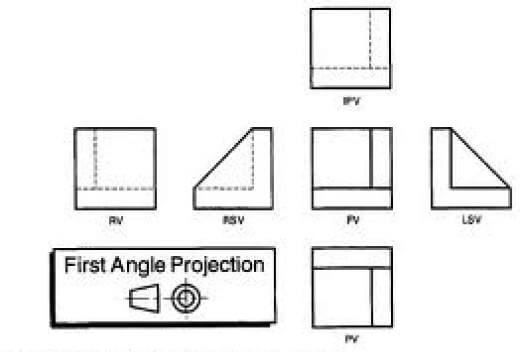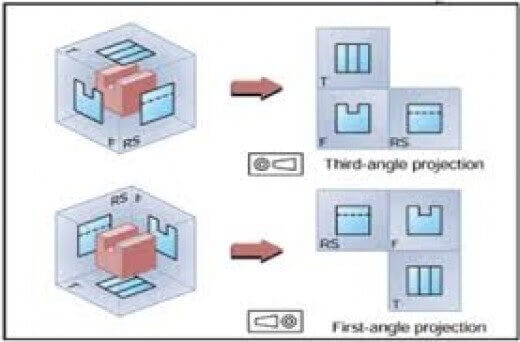Views Of Building Facades From Different Angles Assignment Help
In architectural graphics, the following types of projection are used:
First Angle Projection: In first angle projection, each view is placed in such a way that it represents the side of the object far away from it in the adjacent view. In the first angle projection, images are projected forward. Characteristics of first-angle projection are:
The plan is directly below the front view,
The side views stand on both sides of front view and on one ground line.
Views Of Building Facades From Different Angles Assignment Help By Online Tutoring and Guided Sessions from AssignmentHelp.Net

Third Angle Projection: The third angle projection, each view is so placed that it represents the side of object near to it in the adjacent view. This method has the advantage that features of adjacent view are in juxtaposition. As a result, it becomes easier to associate these features at the time to dimensioning or reading the drawing.
Generally, buildings have some symmetry and it is usually found that three views namely the plan, the front view and one of the side view are sufficient to describe the shape completely. Although two views would describe any object if all hidden details are shown by dotted lines, the result would be confusing. Third angle projection is generally recommended as the standard method of projection.
Characteristics of Third angle projection:
- The plan (top view) is above front view.
- The side views stand on either side of front view, between a pair of horizontal lines.
- Each view is so placed that it represents the side of object near to it shown in the adjacent view.

Combination of First and Third Angle Projection: In relation to the elevation, end views are so placed that they are in third angle projection and plan views in first angle projection. For building drawings, this method is widely used and combines the advantage of both the first and third angle projections.


